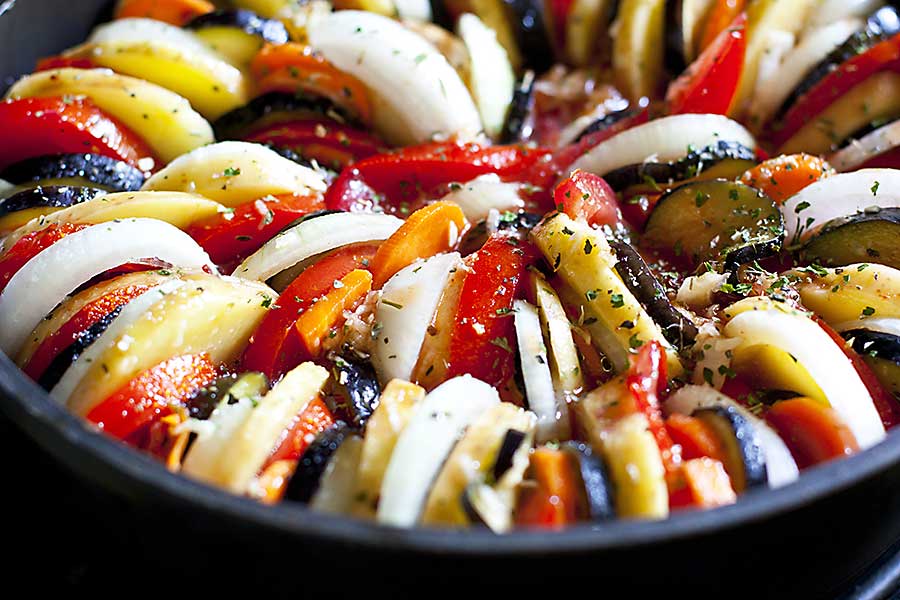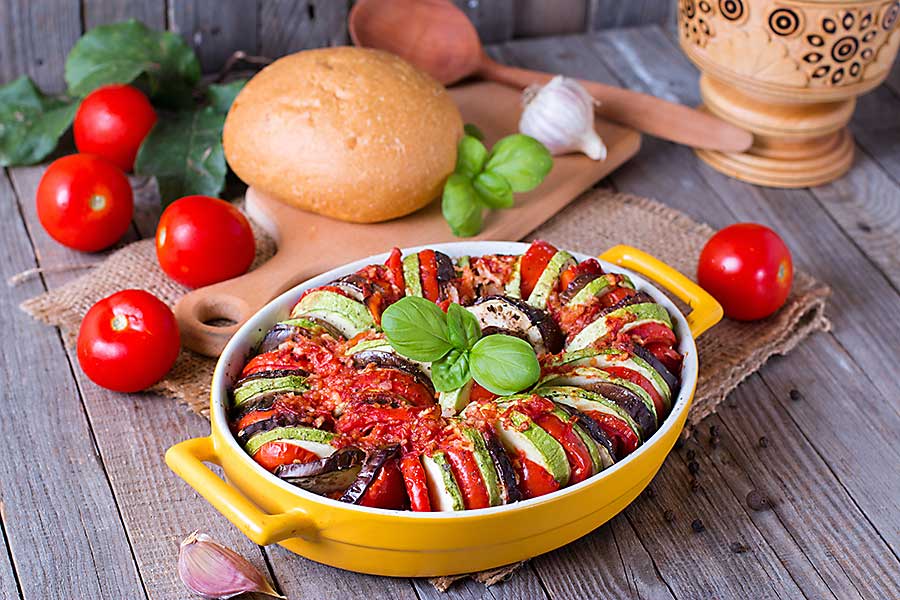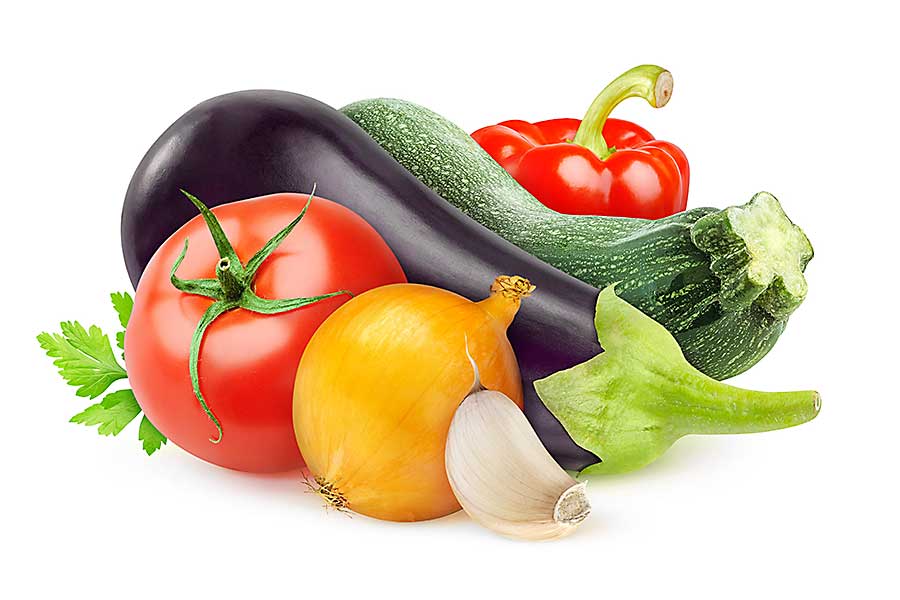Ratatouille
Ratatouille, also known as ratatouille nicoise, is a French Provencal vegetable stew. The typical ingredients used to make ratatouille are onions, eggplants, sweet capsicum, zucchini, leafy greens, and tomatoes. Flavour is added to the stew with garlic, olive oil, and herbes de Provence like thyme and basil. The recipes and cooking methods for ratatouille are widely varied and there is debate about whether the vegetables should be cooked separately or together. You can serve ratatouille hot as a main meal or cold as a side dish.
History of ratatouille
Ratatouille originated in the areas of Provence and Nice. The word ratatouille came from the Occitan word of ratatolha. In French, ratouiller means ‘to stir up’ and in the late-1700s was used to refer to a coarse stew. An abbreviation of the term, ‘rata’, was incorporated into military slang in reference to a stew made from potatoes, beans, vegetables and fatty meats. Zucchini, eggplant, capsicum, tomatoes, and garlic were the vegetables most commonly used to make a rata. The first reference to the word ratatouille in relation to the iconic vegetable stew was published in 1930.
How to make ratatouille
There is no set recipe or ingredient list to make a ratatouille and methods vary widely. That said, you can make ratatouille in two ways. First, you can cook the vegetables individually and then combine them to make a creamy stew. For an easier way to make ratatouille, simply cook all the vegetables together. However that is not the traditional method of preparation.
According to Provencal chefs, you should first fry each vegetable separately, then combine them in a pot with olive oil, garlic, and herbs. They also insist on holding the capsicum over a flame to peel its skin and add a smoky flavour to the stew. It is believed that cooking the vegetables separately allows them to retain and add their own unique flavour to the final dish.
Modern variations exist for cooking ratatouille. Some chefs like to first make a concentrated flavour base with onions, garlic, capsicum, and tomato. To make this base, the vegetables are cooked until their juices have almost evaporated. After that, they layer the remaining vegetables over the base and sauté until the flavours have seeped in and the stew is creamy. Another way to make ratatouille – and the easiest – is by combining all the vegetables and cooking them together.
Variations of ratatouille
There are many variations of ratatouille from regions all over the world. In Spain, there is pisto, a blend of tomatoes, onions, eggplant or zucchini, capsicum, and olive oil. It is typically served as a starter or side dish. Also in Spain, Catalan & Valencia have a dish called samfaina. This dish is less creamy than ratatouille and more of a sofrito made from onion, garlic, eggplant, and tomato. Another Spanish region, Majorca, has a traditional dish named tombet which is very similar to ratatouille.
In southern Italy, a dish named ciambotta bares many similarities to ratatouille. The Turkish or Morroccan mezze dish saksuka is also similar to ratatouille. Vegetables used for saksouka depend on the region, but eggplant is often used. Similarly to that, the Moroccan salad dip, zaalouk, is made from a creamy blend of eggplant and tomatoes. In Georgia, Azerbaijan, and Armenia, a dish named ajapsandali is made from a blend of onions, eggplant, tomato, capsicum, and potato. A variation of Ratatouille exits in Hungary, called lecso. The main ingredients for lecso are yellow pointed peppers, tomato, onion and salt, flavoured heavily with paprika.
How do you serve ratatouille?
Ratatouille is usually eaten as an appetiser or side dish, however you can also eat it as a main meal. In France, ratatouille is usually eaten with fish, quiche, or souffle. Rose is recommended as the best wine accompaniment to ratatouille.
Private Chefs, Art of Dining
CHEFIN is a private chef platform that’s reimagining social dining.
You can easily connect with 1 of our 250 private chefs and treat your guests to restaurant-quality dining experiences in the comfort of your own home, office or chosen venue. From high-end dining to quirky social food experiences, the CHEFIN platform makes it effortless for you to access gourmet food that’s worthy of a Michelin-starred establishment.
What you get:
-
- Your very own private chef who is vetted and insured,
- A customised menu for your needs,
- 24/7 concierge support,
- Complete post-dinner cleanup,
- A fun, stress-free, and unforgettably dining experience!


